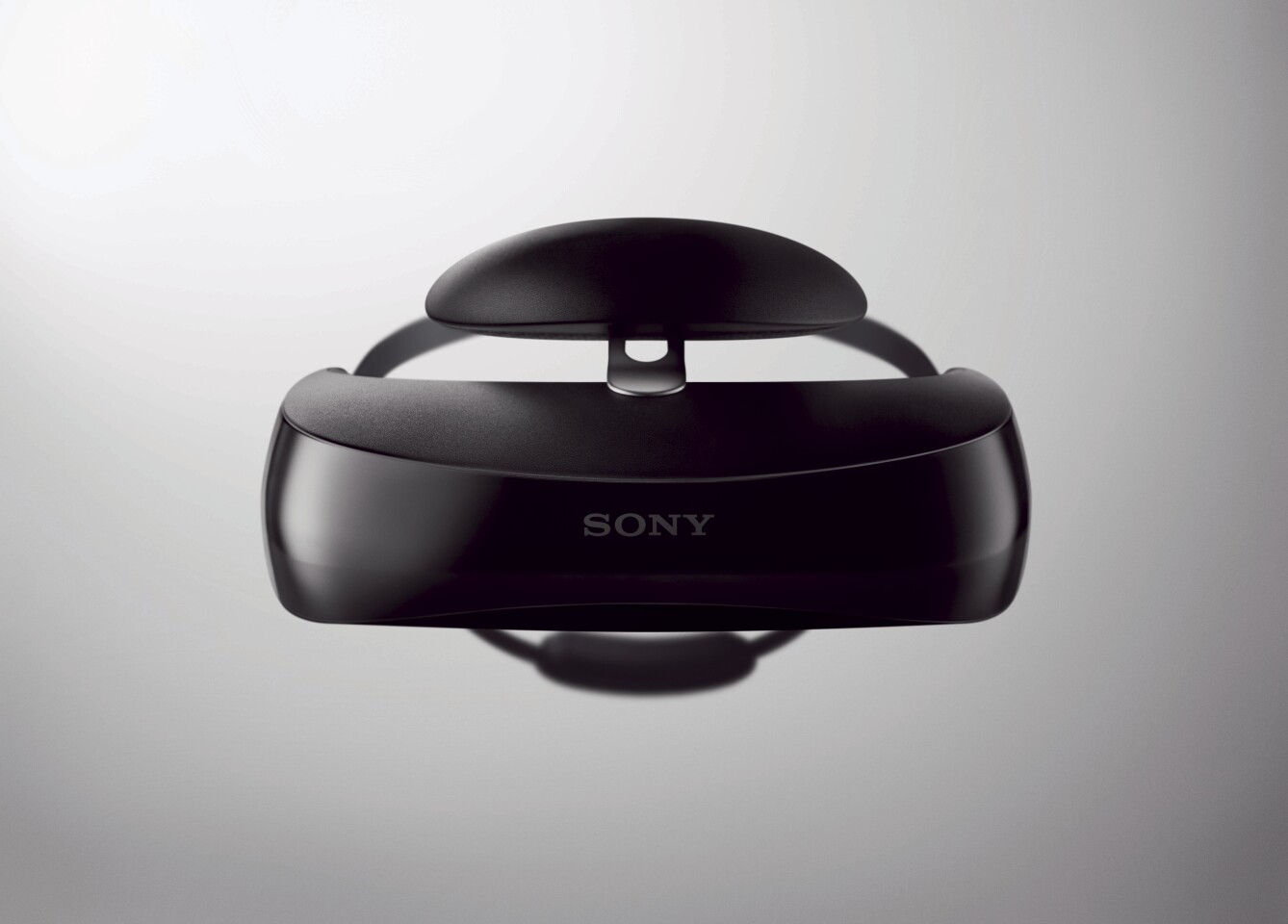In what's now becoming something of a tradition, Sony has announced the next generation of its head-mounted personal 3D video viewer ahead of IFA 2013. Though the HMZ-T3 retains the same display resolution as both of its predecessors, image quality has been improved. The slightly lighter headset also benefits from better audio and a more comfortable fit. The biggest news this time around, though, is the addition of a wireless version ... sort of.
The W at the end of the HMZ-T3W's product name refers to the promise of near-latency-free uncompressed high definition viewing without getting tangled up in cables. Unfortunately there's still one pesky wire to worry about, as users will still need to cable the 189 x 148 x 270 mm (7.4 x 5.8 x 10.6 in), 320 g (11 oz) headset to a lithium battery pack for power and visuals. It's this battery box that's able to wirelessly connect to the system's processor unit over the 59.4 - 63.72 GHz band, with a range of about 7 m (23 ft).
Source media devices are connected to the processor unit via its three HDMI inputs and one HDMI output, though the battery box does cater for direct connection to devices like smartphones and tablets courtesy of its own MHL and HDMI ports. Battery life is reported to be three hours of wireless playback or seven hours cabled.

Like the T2 before it, the HMZ-T3W features two 1280 x 720 resolution OLED panels reported to offer a viewing experience equivalent to watching a 19 m (62.5 ft) screen from 20 m (66 ft) away. Also the same are the response times of the monitors, the field of view and the cinema-like 24p playback.
Users can now reduce the image size down by four steps to a low of 70 percent (similar to a 13.3 m screen from 20 m away), a 2D image can be displayed with a slight virtual curve for a movie theater feel, and gamers are offered four image adjustment modes to increase visibility in darker areas of the screen during a game.
There's an adjustable cushioned head pad to help give some relief from pressure against your noggin, six stage independent lens adjustment, and the device will warn users of prolonged use after three hours.
Though ambient light shields are available to help isolate users from the outside world, there's a handy gap at the bottom of the headset to allow gamers to hit the right key or click the mouse button at that critical win or lose moment, or for the rest of us to reach for a cup of coffee without risking a spill.

Sony says that its Virtual Surround Technology offers accurate sound placement in an immersive 360° soundstage. A 32-bit DAC delivers 7.1 channel audio through supplied earphones that boast 16-mm drivers, with a frequency response of 4 Hz to 27 kHz and 106 dB per mW sensitivity.
The version that requires wired connection between battery box and a slightly lighter processor unit is called the HMZ-T3. Other than supplied earphones with 13.5-mm drivers that have 105 dB per mW sensitivity and a frequency range of 5 Hz to 24 kHz, the specs are the same as the wireless model.
Source: Sony Europe


















